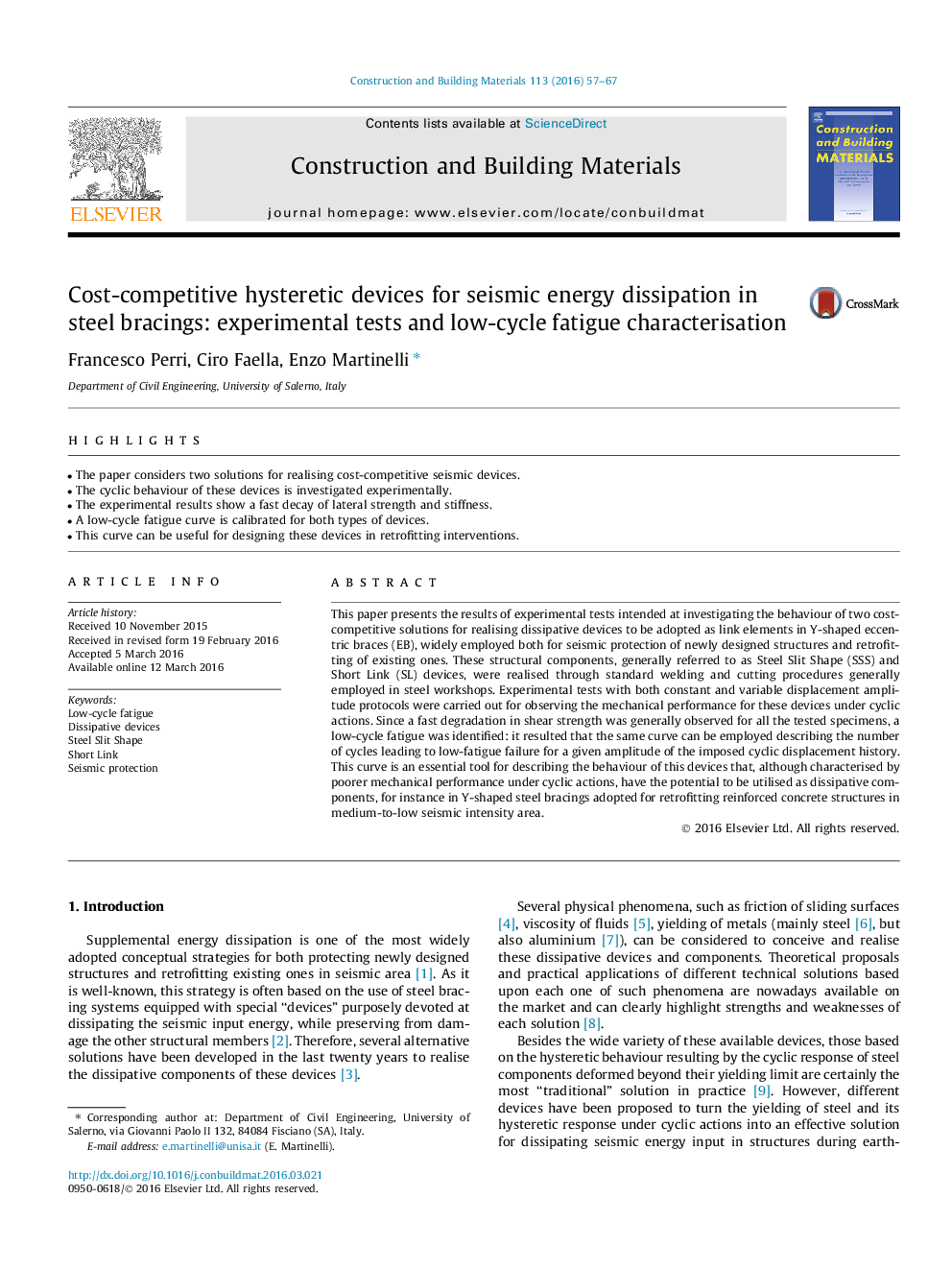| Article ID | Journal | Published Year | Pages | File Type |
|---|---|---|---|---|
| 256135 | Construction and Building Materials | 2016 | 11 Pages |
•The paper considers two solutions for realising cost-competitive seismic devices.•The cyclic behaviour of these devices is investigated experimentally.•The experimental results show a fast decay of lateral strength and stiffness.•A low-cycle fatigue curve is calibrated for both types of devices.•This curve can be useful for designing these devices in retrofitting interventions.
This paper presents the results of experimental tests intended at investigating the behaviour of two cost-competitive solutions for realising dissipative devices to be adopted as link elements in Y-shaped eccentric braces (EB), widely employed both for seismic protection of newly designed structures and retrofitting of existing ones. These structural components, generally referred to as Steel Slit Shape (SSS) and Short Link (SL) devices, were realised through standard welding and cutting procedures generally employed in steel workshops. Experimental tests with both constant and variable displacement amplitude protocols were carried out for observing the mechanical performance for these devices under cyclic actions. Since a fast degradation in shear strength was generally observed for all the tested specimens, a low-cycle fatigue was identified: it resulted that the same curve can be employed describing the number of cycles leading to low-fatigue failure for a given amplitude of the imposed cyclic displacement history. This curve is an essential tool for describing the behaviour of this devices that, although characterised by poorer mechanical performance under cyclic actions, have the potential to be utilised as dissipative components, for instance in Y-shaped steel bracings adopted for retrofitting reinforced concrete structures in medium-to-low seismic intensity area.
